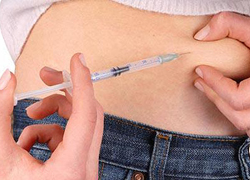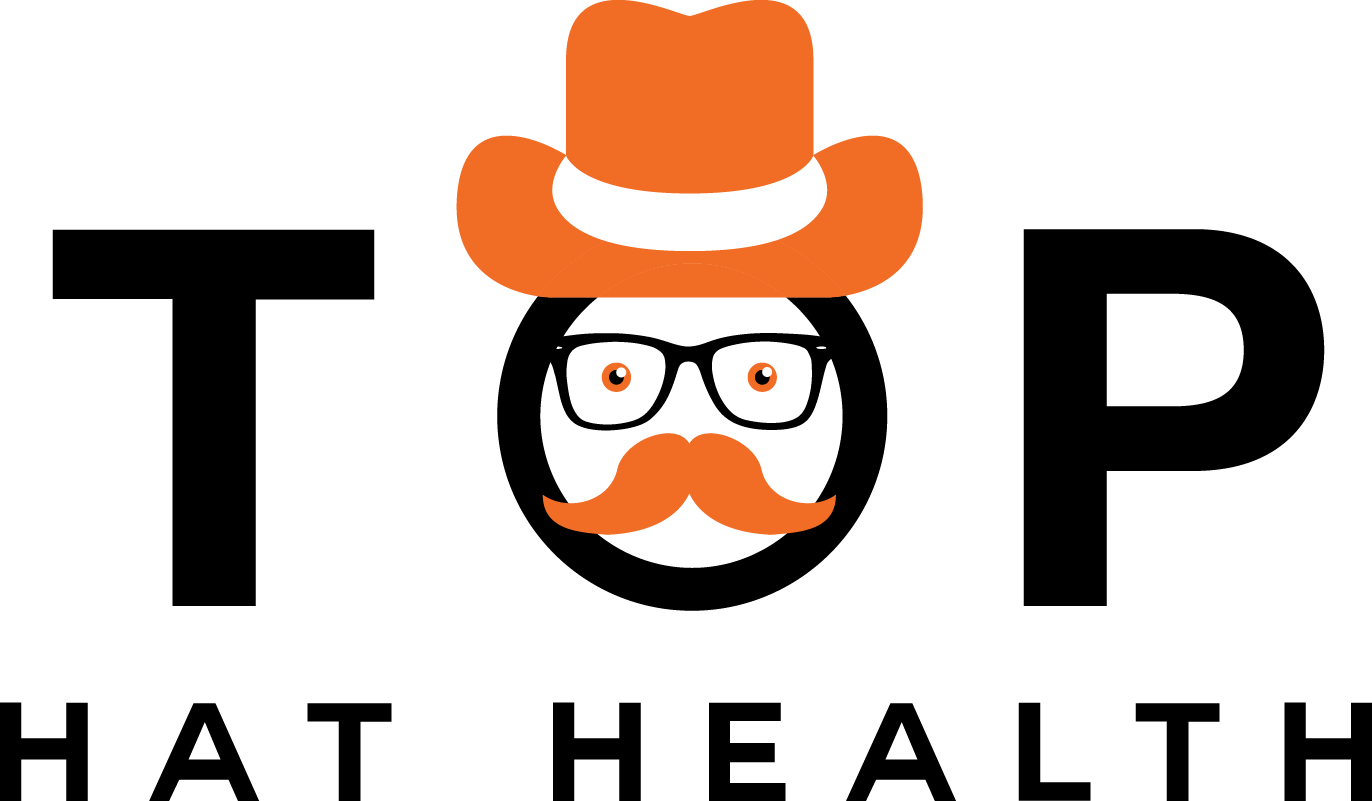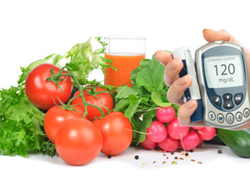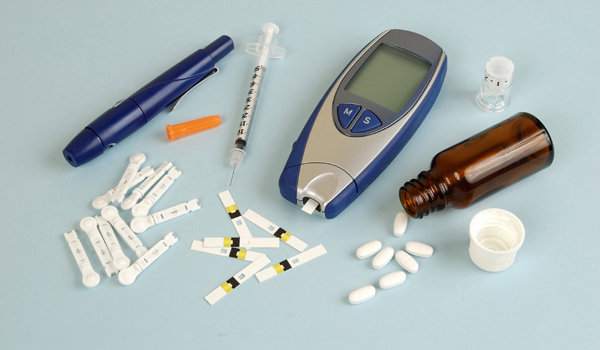Understanding Diabetes by Type
Types of Diabetes Type I and Type II with Symptoms and Diagnosis
There are two different types of diabetes. Type I and Type II. Type I Diabetes is usually diagnosed in children and very young adults. Type I Diabetes differs from Type II in that a person with Type I Diabetes does not produce insulin at all. Insulin is needed to take sugar from the blood into the cells. Type I diabetes used to be called Juvenile Diabetes as it was diagnosed in children at early ages. The symptoms of Type I and Type II Diabetes are very similar. Frequent urination, frequent thirst, and excessive hunger are three of the most common symptoms.
Treatment Options for Type I Diabetes

A person with Type I Diabetes must be on insulin for the rest of his or her life. This does not mean that they cannot lead a long, productive life. People who are diagnosed young in life become accustomed to the treatment and are generally more compliant than those who are diagnosed with Type II diabetes later in life and who tend to ignore many treatment options.
Years ago, a child who was diagnosed with Type I diabetes had to inject himself every day with insulin to remain alive. Today, however, insulin pumps are available that make daily injections a thing of the past. A person with Type I diabetes, as is the case with those with Type II diabetes, has to watch their diet and avoid certain foods high in sugar and starch.
In 1981, the Glycemic Index was developed at the University of Toronto which rated those foods diabetics should avoid on a scale system. Some foods were very high on the scale and took a longer time to process in the system, causing more strain on the kidneys and adverse effects on insulin. Other foods were low on the scale and digested at a slower pace.
For years, it was commonly assumed that sweets were the cause of diabetes at that these were the only foods to avoid. With the advent of the Glycemic Index as well as other medical studies, it became apparent that sweets were not the only foods to avoid. A baked potato, often seen as a nutritional substance, is more harmful than a candy bar.
Carbohydrates are the bane of diabetics. This is the food group rated on the Glycemic Index. People with Type I and Type II diabetes must limit their intake of carbohydrates. Certain carbohydrates, those rated low on the Glycemic Index, can be taken in smaller quantities. Those on the high scale should be avoided at all costs.
Link Between Type II Diabetes and Obesity
People with Type II diabetes are generally diagnosed later in life. This condition often affects older people and those who are obese. The incidents of Type II diabetes have mirrored incidents of obesity in the United States and most in the medical community agree that there is a clear link between obesity and the development of this disease.
Management and Medication

People with Type II diabetes do not process enough insulin to break down the glucose in their system which causes their kidneys to work overtime in getting rid of the waste. While some people with Type II diabetes are prescribed insulin, most are started on a regimen of medication. Physicians generally hope that by taking medication as prescribed, exercising, eating the right foods, and monitoring their blood glucose levels, they can avoid the use of insulin. In many cases, patients are very successful at maintaining good blood sugar levels by modifying their diet, exercising, and losing weight. Others who are not successful usually end up taking insulin.
Complications and Management
As with both Type I and Type II diabetes, there are complications. These complications such as heart disease, nerve damage, kidney disease, and skin disorders can be avoided if patients comply with the instructions of their physician, learn about their disease and do all they can to manage it. Diabetes is far from a death sentence. With proper maintenance, those with Type I and Type II diabetes can live long and happy lives.
Understanding Diabetes by Type: Exploring Hypoglycemia and Its Impact
Hypoglycemia is a symptom of people with diabetes Type I and Type II. It occurs when people have too little sugar, or glucose, in their blood. While this often is the result of medication for diabetes, hypoglycemia has many different causes and can affect anyone. Those with this disorder present with low blood sugar. This can be temporary and easily fixed by protein or food. In some cases, people who have been fasting can develop low blood sugar. Often, this is quickly cured by protein.
It is a common misconception that someone suffering from hypoglycemia should be given something sweet to alleviate the condition. The truth of the matter is that those suffering from hypoglycemia are usually lacking protein and a food high in protein can alleviate their symptoms. Peanut butter is an excellent choice for helping someone suffering from hypoglycemia.
In some cases, however, hypoglycemia is a disease that occurs for many different reasons in a person. The best way to define hypoglycemia is to say that it is the opposite of diabetes. While people with diabetes need to avoid sugar as they have an abundance of glucose in their blood, those with hypoglycemia have low glucose levels and need to replenish the sugar or glucose in their blood. In many cases, those with diabetes may develop hypoglycemia as a reaction to insulin or diet. This is different than someone who experiences hypoglycemia on an occasional basis, usually the result of not eating properly.
Symptoms and Complications

Symptoms of hypoglycemia include shakiness, anxiety, heart palpitations, sweating, dilated pupils, coldness, feeling of fainting, and clamminess. These symptoms are triggered by the loss of glucose that affects the brain If untreated, a person with hypoglycemia can fall into a diabetic coma and even die from the hypoglycemia. If someone is suffering from hypoglycemia, they should be given something to eat rich in protein to avoid falling faint or, in the worst case scenario, falling into a coma.
Other symptoms of hypoglycemia include physical symptoms such as vomiting and abdominal pains as well as hunger. As hypoglycemia continues, neurological symptoms may include difficulty speaking, slurred speech, fatigue, anxiety, lethargy, delirium, headache, stupor, abnormal breathing, and finally, coma.
Medical Assessment and Treatment
One of the first things that a doctor will do to treat someone with hypoglycemia is to determine the circumstances that caused the disease. A physical examination is necessary and blood samples will usually be taken. Many cases of hypoglycemia are unexplained as no sample is taken from the blood before glucose is given to relieve the symptom.
In many cases, hypoglycemia is nothing to be concerned about. It can simply be the reaction of malnutrition or fasting. Many people experience hypoglycemia without even knowing it. If it continues to be a problem, however, many people will seek medical attention to determine the underlying cause of the illness. For the most part, hypoglycemia has many common causes and for those who experience the symptoms, testing by a medical professional is necessary to determine the etiology of the cause of hypoglycemia. In a good number of cases, the cause for hypoglycemia is never determined and the situation resolves itself.







